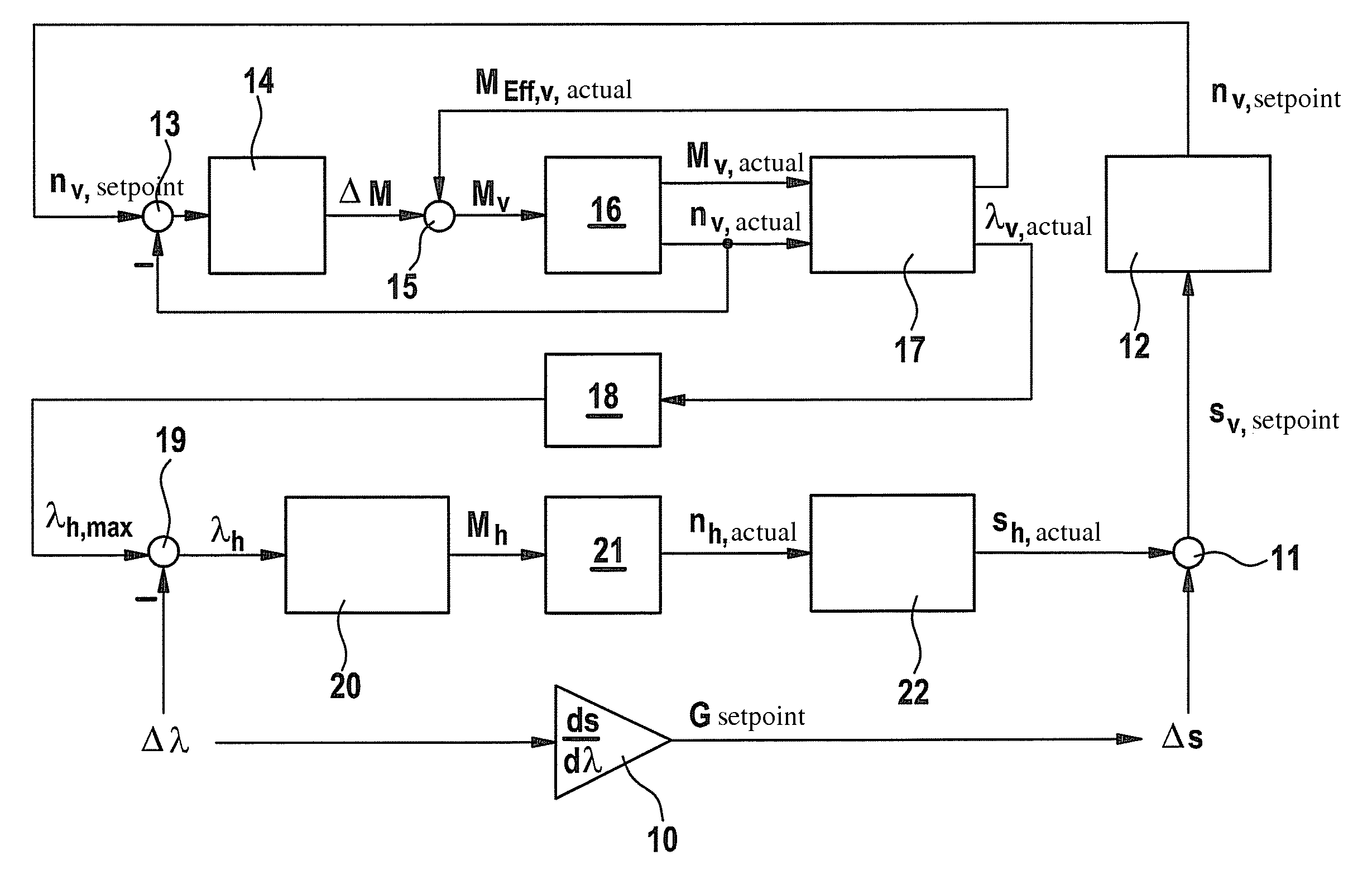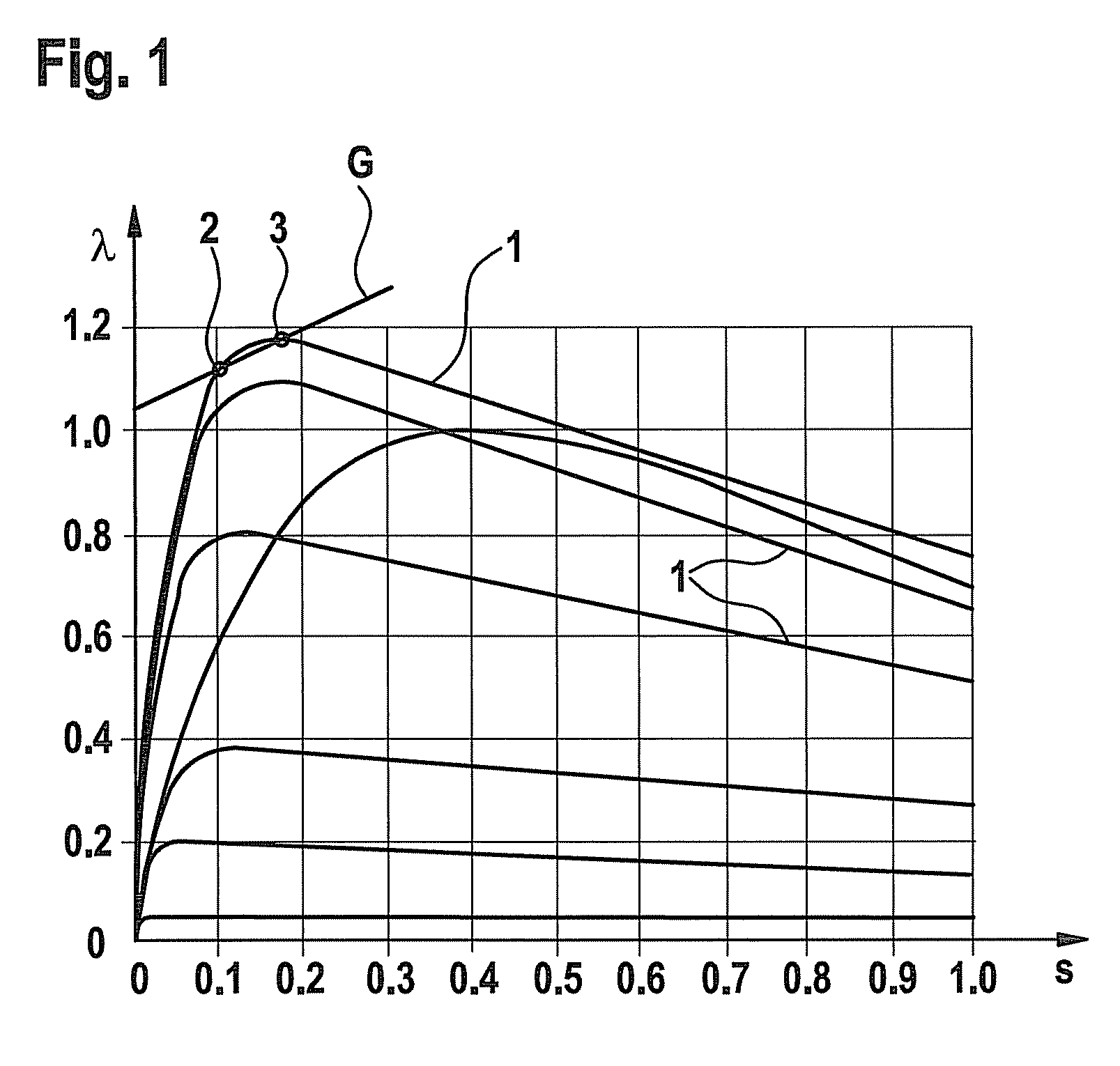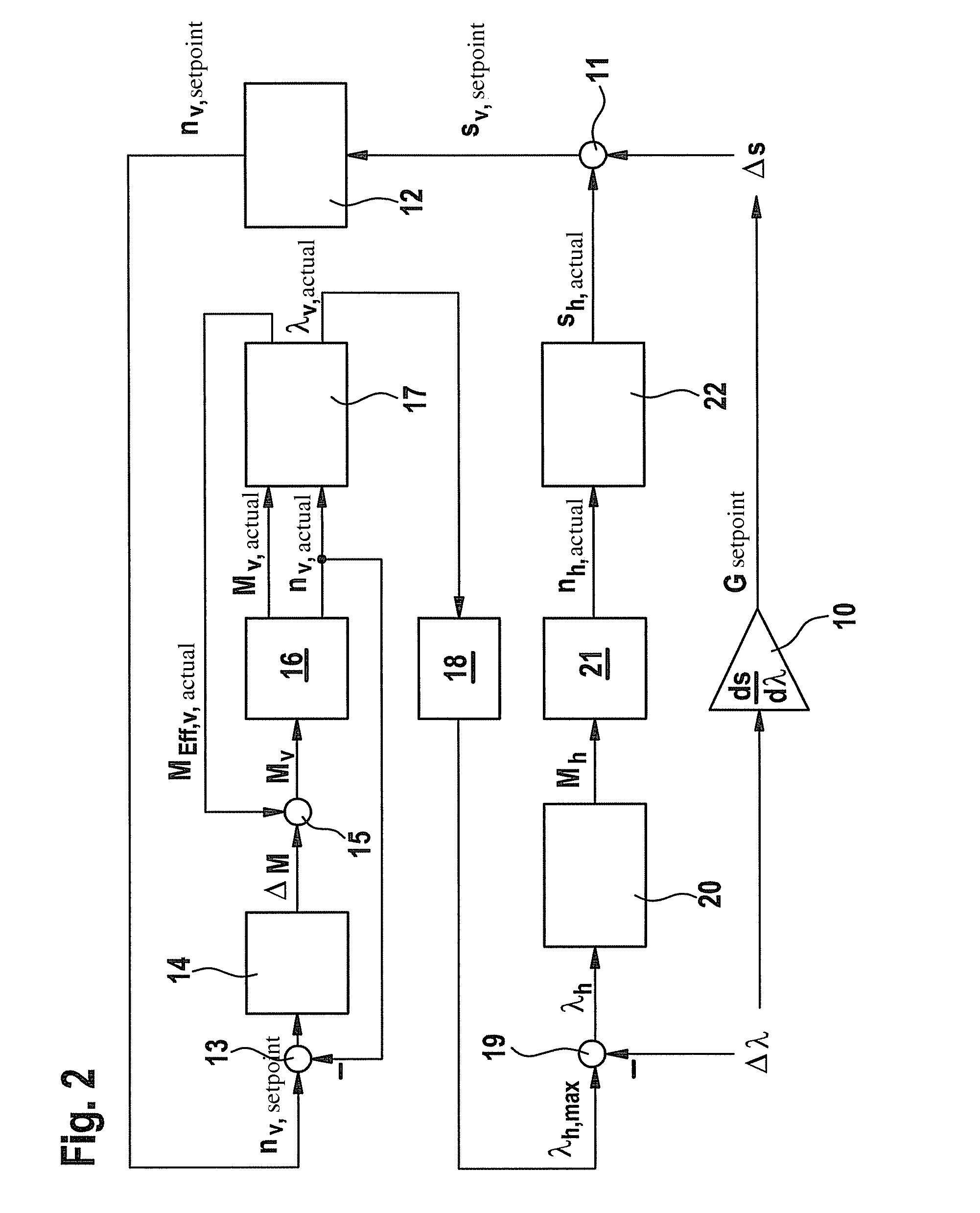Method for setting a wheel torque in a vehicle
a technology for setting a wheel torque and a vehicle, which is applied in the direction of machinery control, instruments, process and machine control, etc., can solve the problem of relatively complicated ascertaining the exact torque of the latter, and achieve the effect of ensuring the stability of the rear wheels and reducing the adhesion coefficien
- Summary
- Abstract
- Description
- Claims
- Application Information
AI Technical Summary
Benefits of technology
Problems solved by technology
Method used
Image
Examples
Embodiment Construction
[0020]FIG. 1 depicts a slip-adhesion coefficient diagram, having a multitude of curves 1 which depict the correlation between adhesion coefficient λ and slip s at a vehicle wheel for various undersurfaces or road conditions. Adhesion coefficient λ designates the quotient of longitudinal force to vertical force at the vehicle wheel in question. The lower curves in FIG. 1 apply to lower friction coefficients, for example under snowy or icy conditions; the higher curve patterns on the other hand apply to higher friction coefficients. The uppermost curve 1 applies to a dry road surface.
[0021]For example, in the area of the maximum of the uppermost curve 1 a gradient G is laid out which is defined as a straight line through two points 2 and 3, of which point 2 is located on the rear wheel and point 3 on the front wheel, with corresponding values for slip s and adhesion coefficient λ. Point 2 on the rear wheel lies before the maximum of curve 1; point 3 on the front wheel on the other han...
PUM
 Login to View More
Login to View More Abstract
Description
Claims
Application Information
 Login to View More
Login to View More - R&D
- Intellectual Property
- Life Sciences
- Materials
- Tech Scout
- Unparalleled Data Quality
- Higher Quality Content
- 60% Fewer Hallucinations
Browse by: Latest US Patents, China's latest patents, Technical Efficacy Thesaurus, Application Domain, Technology Topic, Popular Technical Reports.
© 2025 PatSnap. All rights reserved.Legal|Privacy policy|Modern Slavery Act Transparency Statement|Sitemap|About US| Contact US: help@patsnap.com



